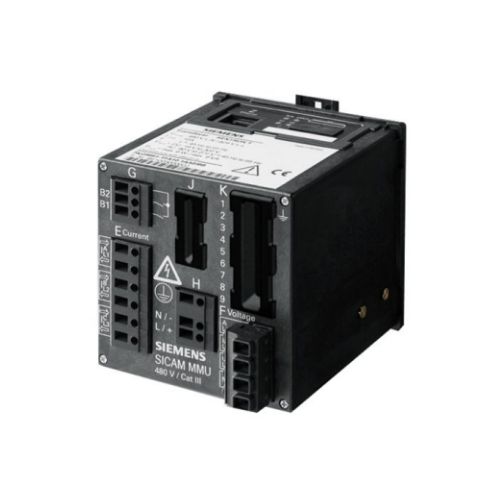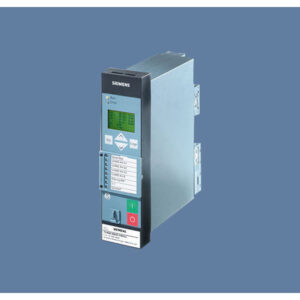Siemens SICAM MMU Power Meter Device
Description
Siemens SICAM MMU Power Meter Device
SICAM MMU Power Meter Device (Measurement and Monitoring Unit) is a power monitoring device that allows the measuring of electrical quantities in electrical networks in a single unit. In industries, power plants and substations, the SICAM MMU is applied to measure and calculate parameters (e.g.current, voltage, power, phase angle, harmonics and unbalance, energy or frequency) and assign them into further processing and visualization to control center (SCADA, DMS, EMS etc) through IEC 60870-5-104 or automation system over MODBUS TCP Protocols.
Applications
- Equipping secondary substations with measurement instrumentation and communication link
- SICAM MMU is used at power utilities as well as industrial and commercial applications
- Connection in 1-phase systems, in 3-wire and 4-wire systems
- Support the integration of online measurements into network control systems and automation systems, protocols via IEC 60870-5-104 or MODBUS TCP, e.g. for voltage and load control
- Monitoring of transformers and distributed power generation
- Alarming and notification of limit violations via protocol or binary outputs
- Basic power quality profile monitoring (voltage, frequency, harmonics and unbalance)
- Option to support all power systems IT, TT and TN
Technical specification
- Compact and rugged design
- Over 100 measured or calculated values available
- Temperature range: -25 °C to +55 °C / -13 °F to 131 °F
- Measuring accuracy: 0.1 % deviation for rated input voltage and rated input current according to IEC 60688 and 0.2 s according to IEC 62053-21
- High EMC immunity: according to the requirements of EN 61000-62 and EN 61000-6-4 for the EMC directives and the requirements of EN 61010-1 for the low-voltage directive
- UL certification according to UL 61010-1 standard
- Flexible current measuring range (up to 2 x In)
- 2 individual binary outputs for fast switching, indications (e.g., limit violation) and operation status monitoring
- 4 LEDs for local status visualization
- Ethernet communication via IEC 60870-5-104 or MODBUS TCP protocols
- Internal battery to power the real-time clock and save the energy counter values in case of auxiliary voltage failure
- Real-time clock (RTC), field bus synchronization or network synchronization possible via NTP
Housing specification
- DIN rail mounting device
- Plastic case 96 mm × 96 mm × 100 mm/ 3.78 in. x 3.78 in. x 3.94 in. (W × H × D)
- Degree of protection: IP20
Input and output circuits
- 4 inputs for alternating voltage measurements
- 3 inputs for alternating current measurements up to 10 A continuous current
- Individually programmable binary outputs
Signalization LEDs
- To automatically monitor the functions of hardware, software, and firmware components
Communication
- Ethernet: IEC 60870-5-104 or MODBUS TCP communication protocol
Measurands
- The following measurands can be recorded or calculated from the measured quantities:
- TRMS (True RMS) for alternating voltage and current
- Active, reactive and apparent power
- Active, reactive and apparent energy
- Power frequency
- Phase angle
- Power factor and active power factor
- Voltage and current unbalance up to 21st harmonic
– Mean value of the 3 phase voltages: Vavg
– Mean value of the 3 phase currents: Iavg
Time synchronization
- External time synchronization via Ethernet NTP
- Internal time synchronization via RTC (if external time synchronization is not available)
Customer benefit
- Reliable and cost efficient support of power system management and planning by measurements from distribution systems
- Reduced cabling through Ethernet
- Real-time data transmission via mobile communications (e.g. GPRS, UMTS) through reduced data rate
- User-friendly operation through Web Server (no extra software for parameterization needed, no converters and extra cables)
Many electronic devices and automation systems in industrial production plants are sensitive to voltage variations and dips in the power supply that are often caused by the unexpected connection of energy sources, such as renewable energy and large energy consumers. The production systems themselves can also cause faults and feed them back into the distribution system. The risk? Plant shutdowns and production loss. The answer? Power quality. Power quality needs to be continuously measured and analyzed so that unexpected risks can be detected early on. Explore the power quality and measurement products with us. Click here!








Reviews
There are no reviews yet.